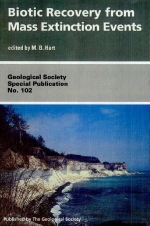Добрый день, Коллеги. Важное сообщение, просьба принять участие. Музей Ферсмана ищет помощь для реставрационных работ в помещении. Подробности по ссылке
Biotic recovery from mass extinction events / Восстановление биологического разнообразия после массовых вымираний
Various palaeoecological trends have been identified in the Phanerozoic, each focusing on different aspects of the fossil record. Patterns that have been described include histories of tiering, palaeocommunity species richness, and guild occupation in evolutionary faunas, as well as onshore-offshore trends in origination, expansion and retreat. Patterns of change through time have also been documented from biosedimentological features (ichnofabrics, microbial structures, shell beds). Such trends can be compared and contrasted to yield unique insights into understanding the changing ecology of the past, and in particular may be helpful in evaluating the relative degree of ecological degradation caused by a mass extinction. This comparative approach can also shed light on a variety of fundamental palaeobiological problems, for example, why no new body plans (phyla) have evolved since the early Phanerozoic. Causes of this phenomenon are thought to be either: (1) ecospace was not sufficiently open after the early Phanerozoic for survival of new body plans; or (2) accumulating developmental constraints after the early Phanerozoic have prevented the evolution of new body plans. Because the Permian-Triassic mass extinction was the most devastating biotic crisis of the Phanerozoic, one might expect new body plans to appear if ecospace were the primary limiting factor and opened sufficiently by this mass extinction. Although previous studies have shown that ecospace availability in the Cambrian and Early Triassic was indeed different, this comparative approach indicates that ecological conditions in the Early Triassic were most like those of the Late Cambrian/Early Ordovician. Thus, if ecospace availability has constrained the survival of new body plans, then ecospace has always been sufficiently filled after the Cambrian explosion to inhibit their evolution.




